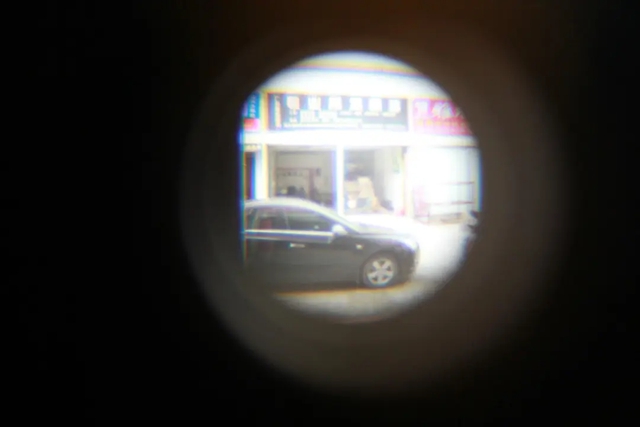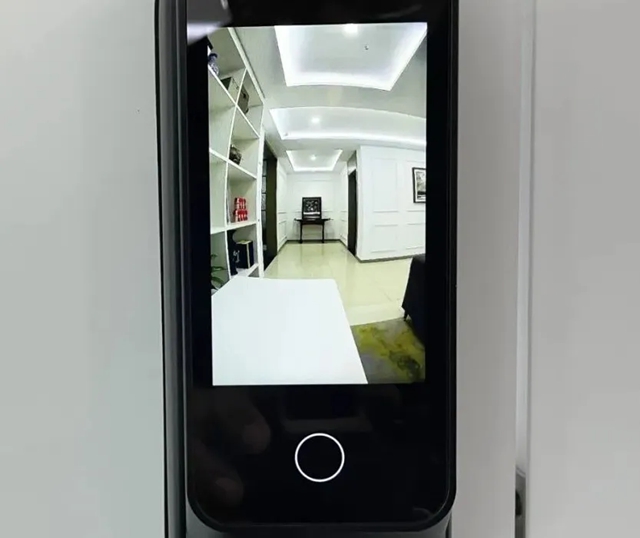The indoor screens of smart locks are playing an increasingly significant role.
In recent years, cat-eye video locks have become a popular product in the smart home industry. Have you noticed that most cat-eye video locks now come with an indoor screen in addition to the essential camera?
1. Indoor Screen + Camera: Enhancing Visibility
Currently, the indoor screens of smart locks work in conjunction with the front-panel cameras, effectively replacing traditional optical cat-eyes (the circular device on entry doors).
Traditional cat-eyes use optical structures that only allow limited visibility through a small hole. The image quality is poor, and they have difficulty adapting to different lighting conditions, making it hard to see clearly in low light or at night.
To address these shortcomings and enhance entryway security, electronic cat-eyes were developed. These typically consist of a camera and an indoor screen. The camera captures the image and transmits it to the indoor screen.
The combination of a camera and an indoor screen in cat-eye video locks not only replaces optical cat-eyes but also upgrades the traditional electronic cat-eye, integrating the functions of a lock, doorbell, and surveillance system into one cost-effective device.
Compared to traditional optical cat-eyes, the cameras in cat-eye video locks often feature wide-angle or even fisheye lenses, offering a broader field of view. They also include built-in infrared night vision to adapt to varying light conditions.
Moreover, the indoor screen displays the camera feed. Many industry leaders use IPS color screens known for their true-to-life colors, fast response times, and eco-friendly, energy-saving properties. Importantly, the indoor screen allows users to view the outside without having to press their face against the door, unlike traditional cat-eyes. Most smart lock indoor screens are around 4 inches, providing a comfortable viewing experience.
2. Small Screen, Big Impact: Addressing Special Needs
Beyond product features, indoor screens also cater to specific groups such as the elderly, children, and individuals living alone.
- Convenience for the Elderly and Children
Many in these groups either do not have or do not know how to use smartphones, making it difficult to utilize remote viewing and communication functions. Indoor screens allow them to easily check outside their doors.
- Extra Security for Individuals Living Alone
For those living alone, an indoor screen provides added security. If someone rings the doorbell or there is unusual activity outside, they can check the situation on the screen, reducing the risk of opening the door to strangers and potential danger.
The emergence of smart lock indoor screens may follow the trend of industry development and potentially increase product costs, but it undeniably brings convenience and safety to users. This is not a superfluous feature.
From the development trends of smart lock indoor screens in recent years, it is evident that screen size, resolution, and materials are all improving. In the future, indoor screens will undoubtedly offer users a better experience, adapting to more complex usage scenarios and needs.
Post time: Jun-19-2024






